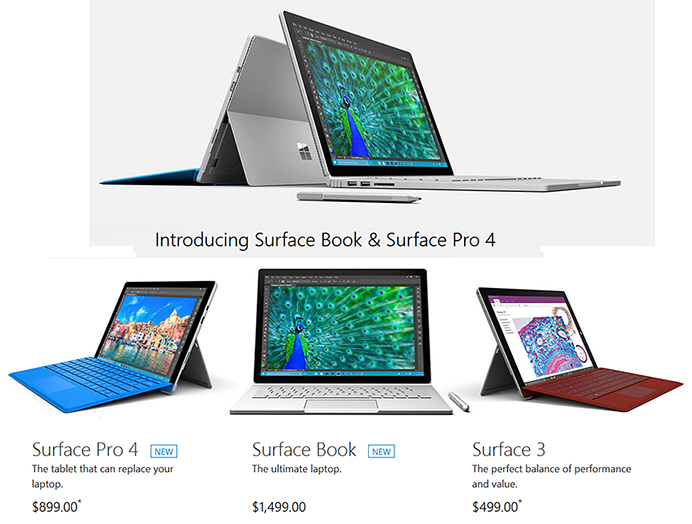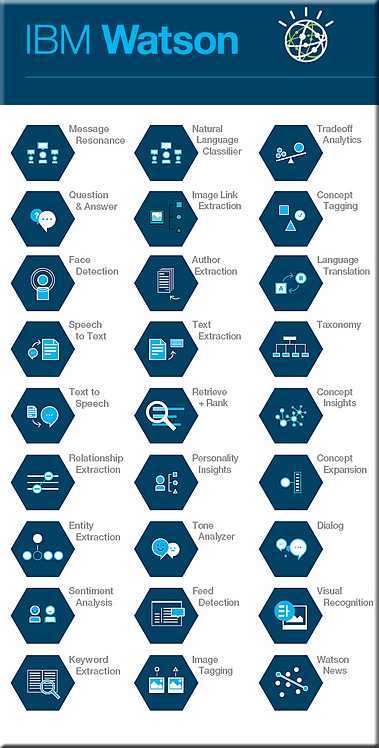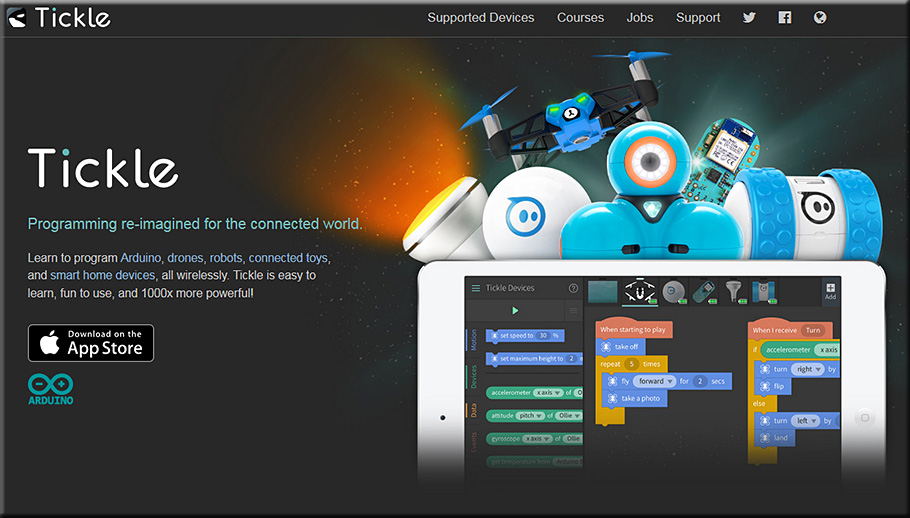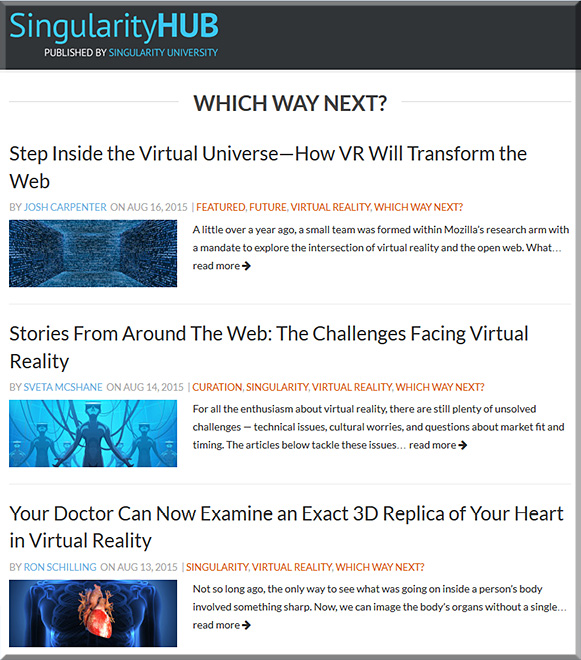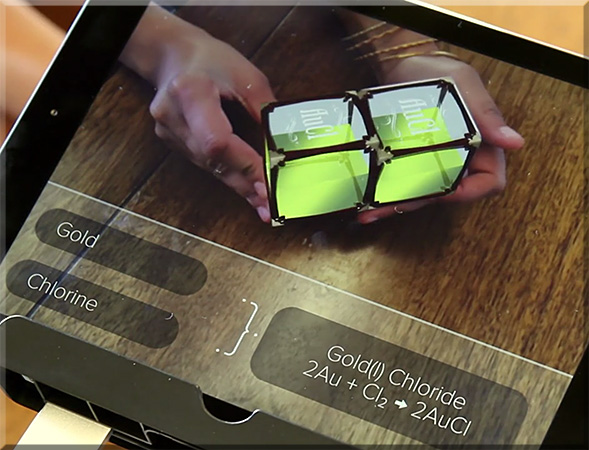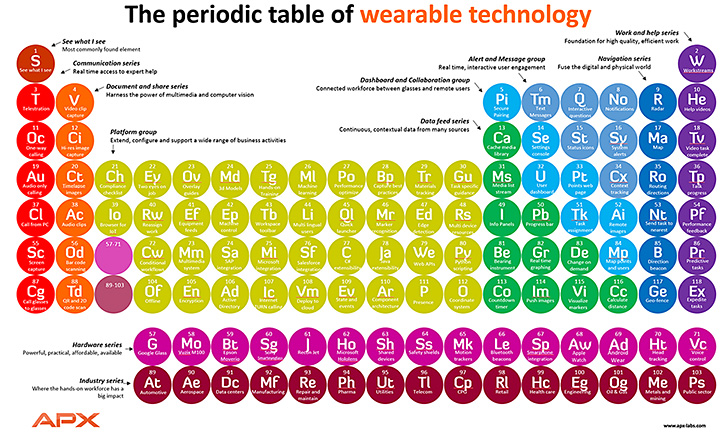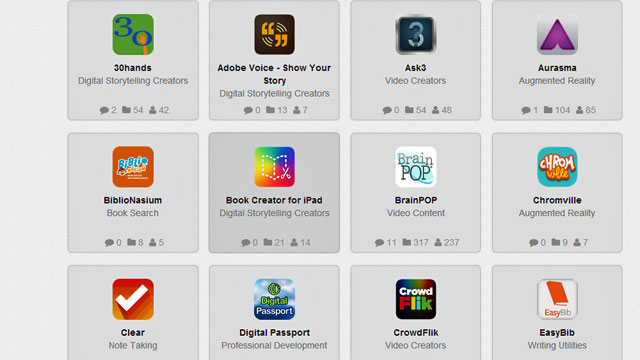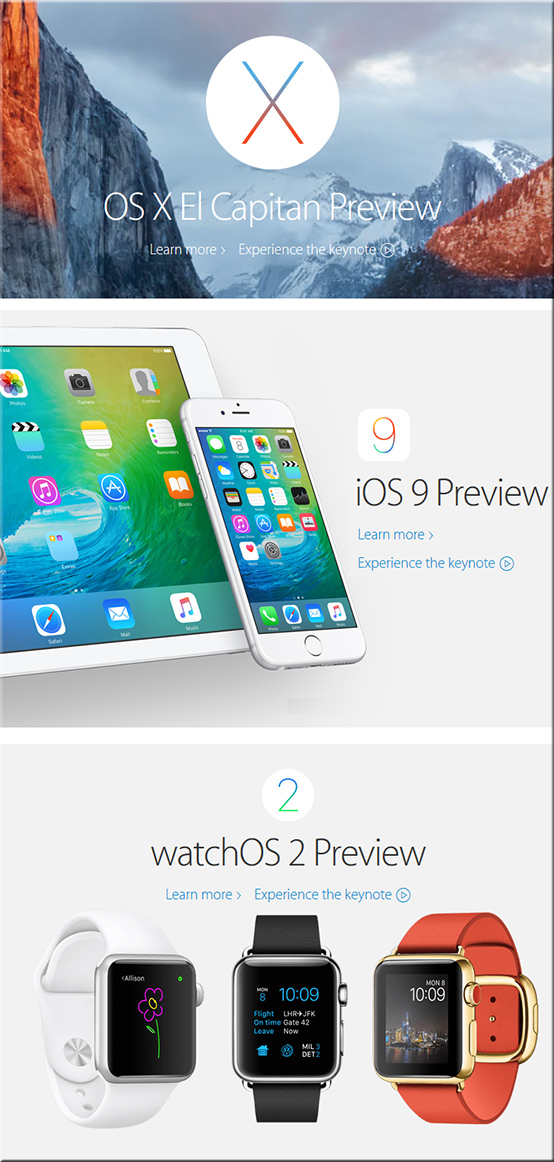6 fascinating ideas that are about to change our world — from businessinsider.com by Barbara Tasch which also eventually points to a posting entitled Future technology: 22 ideas about to change our world — from sciencefocus.com
Excerpt:
- Hydrogen-powered cars and refueling stations
- Nearly supersonic trains
- Internet for everyone
- Self-driving semitrailers
- Fight fire with sound
- Portable water-treatment systems
The Rise of Cognitive Business — from ibm.com by John Kelly
Excerpt:
When the original Watson won on the TV quiz showJeopardy! in 2011, it was one computer tucked away in a room at IBM Research. Now it’s in our cloud, available anywhere. Back then, Watson consisted of a single software application powered by five core technologies. Today, it includes 28 cognitive services. Each represents a different mode of thinking–visual recognition, personality insights, relationship extraction and tradeoff analytics, to name a few. And more are on the way.
That’s a lot of technological progress in five years, underpinned by IBM’s deep technology capabilities in areas like data analytics, open standards, cloud services and security, and our deep knowledge of industries and professions. But just as important is the progress that we and our partners are making in applying cognitive technologies to real-world problems and opportunities.
Because of that progress, IBM is embarking today on a company-wide initiative aimed at accelerating the delivery of cognitive computing to businesses, government, and society. It’s similar to our launch of System/360 in 1964–a move that revolutionized computing and, over time, transformed the way business was done.
We believe that the world has entered a new era in the history of computing, which we call the cognitive era. IBM is committed to advancing cognitive technologies and a new way of solving problems to help transform companies, industries and professions, and to improve the day-to-day lives of individuals everywhere.
New innovation brings 3D virtual organs to the operating theater — from adigaskell.org
Excerpt:
Recently I wrote about a novel new tool to telementor surgeons as they operate on patients. The system allows the surgeon performing the operation to receive help and guidance from a more experienced peer using telecommunications equipment.
The technology, called the System for Telementoring with Augmented Reality (STAR), was documented in a recent study and harnesses a range of technologies to provide surgeons with a transparent display, and several sensors to improve the communication between mentor and mentee.
Preparing for surgery
This approach is pretty cool, yet it nonetheless only provides help and support during the surgery itself. A new health tech startup called EchoPixel is hoping to change that by providing an accurate and realistic representation of the organ being operated on prior to the surgery taking place.
The company wanted to improve the existing methods of preparing for surgery, which usually revolve around 2 dimensional images produced by CT and MRI scanners of the relevant organs.
What Will the Future of Collaboration Look Like? — from corporatetechdecisions.com by Jonathan Blackwood
Collaboration is a term whose very definition is in flux. So what will collaboration look like in the near future?
Excerpt:
The implementation of unified communication technologies has allowed for multiple offices to communicate, and placed less of a burden on employees being in office, resulting in part-time or full-time employees working from home. As a result, collaboration has centered around allowing employees to work together across distances.
“The out-of-room experience has been where all the focus has been. I think what happened, and the reason that we and Barco and Crestron have devoted so much time and money to the in-room experience is because that was really lacking,” says Rob Balgley, CEO of Mersive. “I think what you’re going to see next is the in-room experience that we’ve created, that others have created, is going to be married with the out-of-room experience, and that’s going to be the next big thing.”
From DSC:
These advancements should help us connect remote learners
with those learners meeting within a face-to-face setting.









